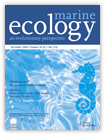The Effect of Salinity and Temperature Gradients on the Distribution of Littoral Microalgae in Experimental Solar Ponds, Dead Sea Area, Israel
Abstract
Abstract. Several species of cyanobacteria, diatoms and one euglenid alga populated the littoral zone of hypersaline solar ponds investigated over a period of three years. The composition of the microalgae community changed with salinity and temperature. In the shallow marginal zone the diatoms predominated in winter and spring, at salinities of 30–72 g-1-1 and at temperatures not exceeding 30o°C, whereas in summer, cyanobacteria were the most abundant. In the deeper zone, at higher salinities and temperatures, cyanobacteria predominated throughout the year. The depth limit of algal growth was 60-80cm, where salinity and temperature exceeded 211 g-1-1 and 48°C.
The most euryhaline and eurythermal among cyanobacteria were Aphanolhece halophytica Fremy and Phormidium hypolimneticum Campbell, among diatoms Nitzschia sp. aff. N. rostellata Hustedt, Amphora coffeaeformis (Agardh) Kutzing, and Navicula massadaea Ehrlich.




